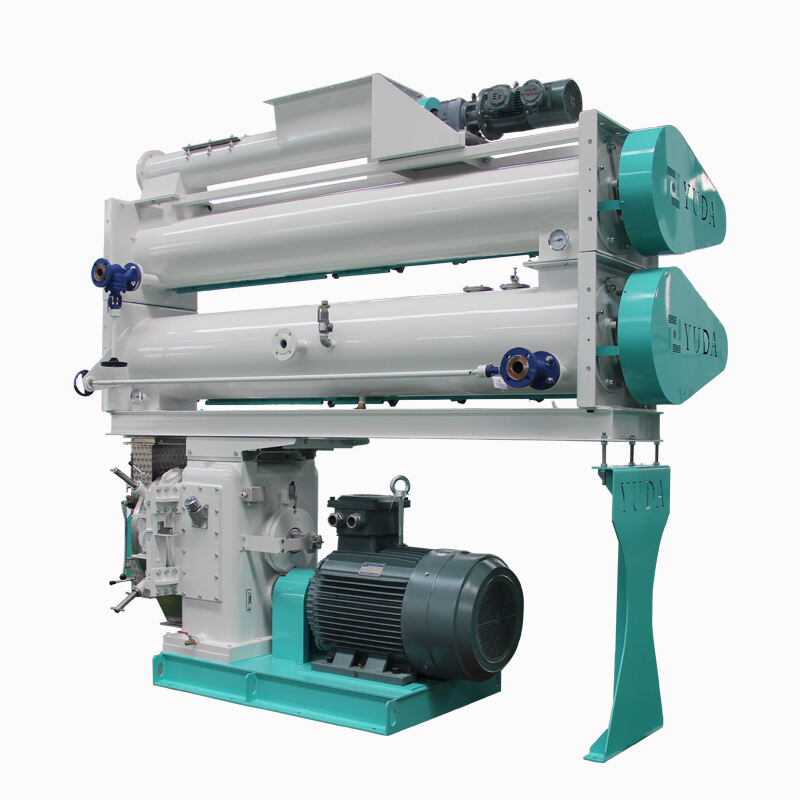In the feed machinery industry, pellet mill as the key equipment for producing pellet feed, its stable operation is crucial to guarantee the production efficiency and reduce the cost. However, the pellet mill is often faced with clogging and downtime problems in the operation process, which not only affects the production progress, but also may cause equipment damage.
Strictly control the quality of raw materials and processing links
Raw material is the primary factor affecting the operation of the pellet mill. Raw materials with high moisture content are easy to stick and block the mold holes in the pelletizing process. For example, in the humid season in the south, if the straw, wood chips and other raw materials are not fully dried, the moisture content of more than 15%, it is very likely to trigger the plugging phenomenon. In this regard, enterprises should be equipped with accurate moisture detection equipment, real-time monitoring of raw material moisture. For the moisture exceeds the standard of raw materials, through the drying, drying and other ways to make it reach the ideal moisture content, generally controlled at 10%-15% is appropriate.
Raw material impurities and particle size should not be ignored. If the raw material is mixed with sand, metal, cloth or long fibers and other foreign matter, it is very easy to cause clogging of the die hole in the granulation. At the same time, the pellet machine has specific requirements for the feed particle size, uneven particle size will lead to uneven feeding and pressing. Therefore, before the raw material is put into the pellet machine, it needs to be pre-treated with the help of screening machine, pulverizer and other equipment to ensure that the raw material is pure and the particle size is in line with the specifications of the equipment.
Standardize the operator's workflow
Feeding link has a significant impact on the stable operation of the pellet mill. Uneven feeding or sudden addition of too large a quantity will break the balance of compression in the pelletizing area, resulting in instantaneous blockage and even affecting the operation of the main shaft. The operator should strictly control the feeding speed to keep the feeding uniform and stable. Automatic control of feeding volume can be realized by installing feeder to avoid human error. In addition, in the production process, the operator should pay close attention to the operating status of the equipment, such as motor current, material discharge, etc.. Once abnormalities are found, the machine should be shut down immediately to avoid worsening of the problem.
Reasonable arrangement of production time, to avoid long time continuous overloading of the equipment, to prevent the machine from overheating or other overloading problems. At the same time, regular training for operators, so that they master the correct startup and shutdown procedures of the pellet machine, as well as the feed rate and moisture control methods, emergency response skills, etc.. Formulate detailed and strictly enforced operating procedures to reduce equipment damage and low productivity caused by improper operation.
In Summary
By strictly controlling the quality of raw materials and processing, optimizing equipment commissioning and maintenance, standardizing the operating procedures of operators and other initiatives, feed manufacturers can effectively reduce the risk of pellet mill clogging and downtime, to ensure efficient and stable operation of the equipment, enhance the overall efficiency of feed production, and promote the feed machinery industry towards high-quality, sustainable direction.

 EN
EN















